This eye-catching building has been a local landmark for nearly 75 years. Purpose built as the Avion Super Cinema, it was officially opened on 26 September 1938 by the Mayor of Walsall, with a personal appearance by the ukulele-strumming entertainer George Formby, to promote his latest film, I See Ice. The Avion remained largely unaltered until its closure on 30 December 1967, but reopened almost immediately as the Avion Bingo Hall which, itself, closed on 1 August 2009.
A plaque documenting the history of The Avion.
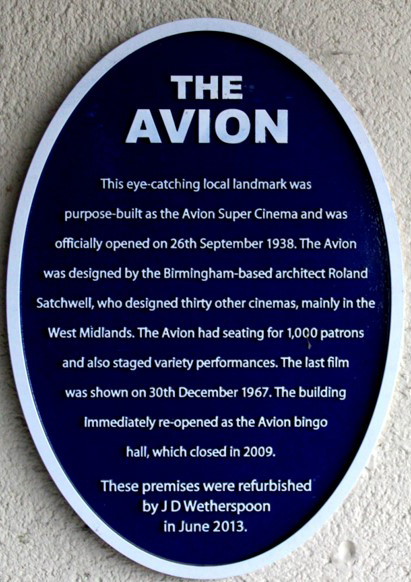
The plaque reads: This eye-catching local landmark was purpose-built as the Avion Super Cinema and was officially opened on 26 September 1938. The Avion was designed by the Birmingham-based architect Roland Satchwell, who designed thirty other cinemas, mainly in the West Midlands. The Avion had seating for 1,000 patrons and also staged variety performances. The last film was shown on 30 December 1967. The building immediately re-opened as the Avion bingo hall, which closed in 2009.
These premises were refurbished by J D Wetherspoon in June 2013.
Photographs and text about a book entitled The Avion.
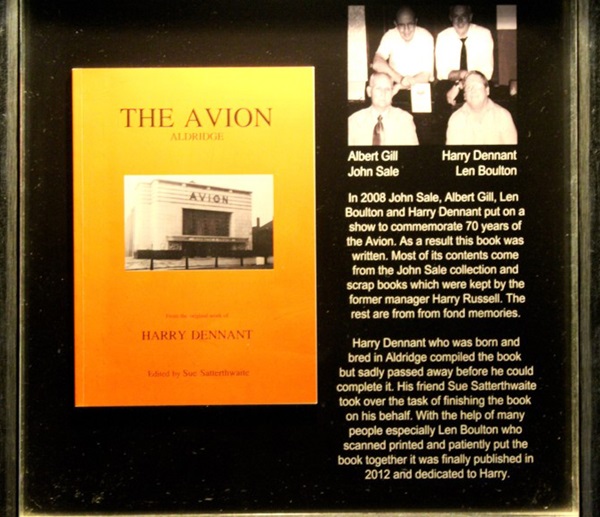
The text reads: In 2008 John Sale, Albert Gill, Len Boulton and Harry Dennant put on a show to commemorate 70 years of The Avion. As a result this book was written. Most of its contents come from the John Sale collection and scrap books which were kept by the former manager Harry Russell. The rest are from fond memories.
Harry Dennant who was born and bred in Aldridge compiled the book but sadly passed away before he could complete it. His friend Sue Satterthwaite took over the task of finishing the book on his behalf. With the help of many people especially Len Boulton who scanned printed and patiently put the book together it was finally published in 2012 and dedicated to Harry.
A poster and text about the London, Midland and Scottish Railway.
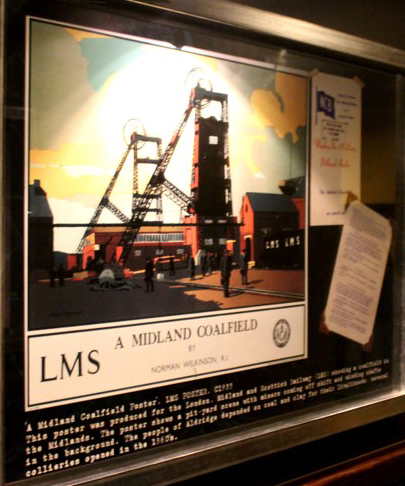
The text reads: This poster was produced for the London, Midland and Scotland Railway (LMS) showing a coalfield in the Midlands. The poster shows a pit-yard scene with miners coming off and winding shafts in the background. The people of Aldridge depended on coal and clay for their livelihoods, several collieries opened in the 1860s.
A painting entitled Barges, by David Bomberg.
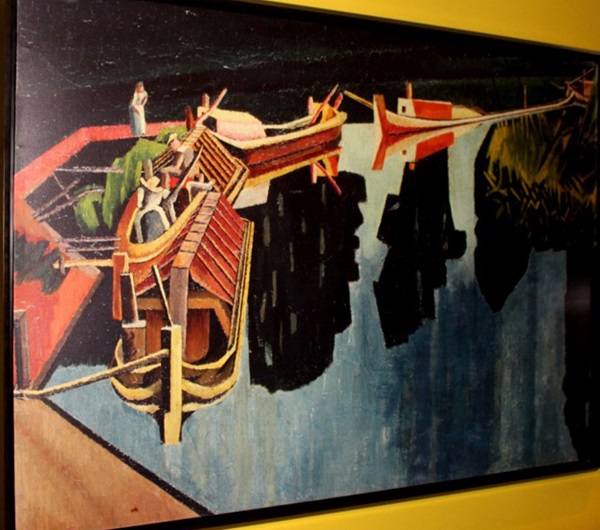
The text reads: Development of heavy industries in Aldridge was hindered by the poor condition of the roads. Improved transport was the vital factor that changed Aldridge into an industrial village. The canals were opened between 1803 and 1847 and a visit to Hay Head Wood shows the scale of the activity in the area – mine shafts, brick mounts for a steam engine and five kilns of this lime works, abandoned in 1870, on the meandering contour canal.
Aldridge Marina is a major waterways place on the Birmingham Canal Navigations. This provided the inspiration for the painting, which is a print of the original oil on canvas.
The canal map was kindly donated by Mapseeker.co.uk.
Prints and text about bingo at The Avion.
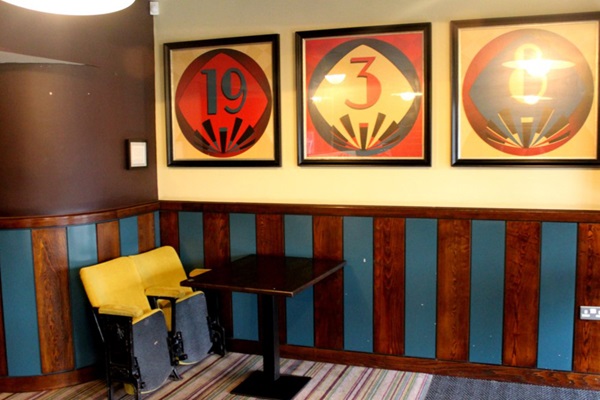
The text reads: The Avion Super Cinema opened on 26 September 1938. It remained largely unaltered until its closure, on 30 December 1967, but re-opened almost immediately as The Avion Bingo Hall manged by ‘Bingo Bob’ Whitehouse for many years. The Bingo Hall eventually closed on 1 August 2009.
The artist created a set of prints inspired by bingo numbers and Art Deco styled cinemas built in the early 1900s.
Film reel art displayed in the pub.
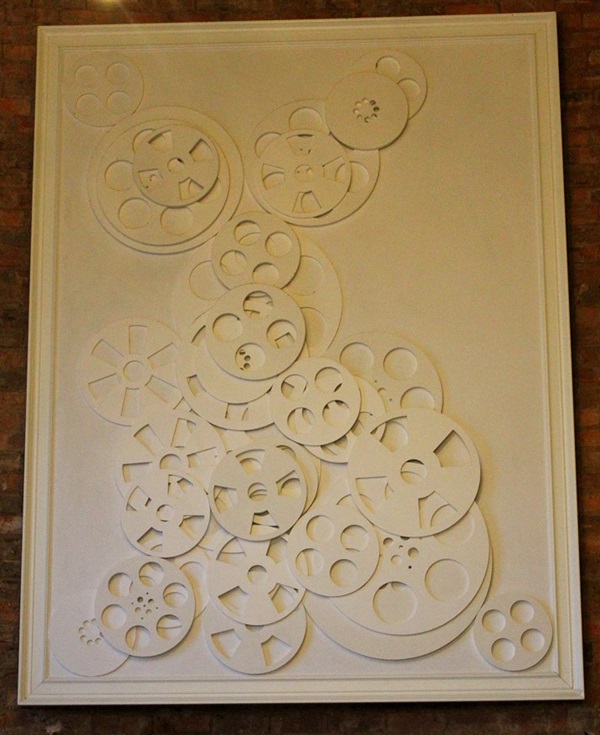
The text reads: This wall relief was inspired by the buildings former use as a cinema. The artist created various simple designs based on old film reels, which were cut out of different depths of foamex and mounted together like an old pile of discarded reels.
External photograph of the building – main entrance.
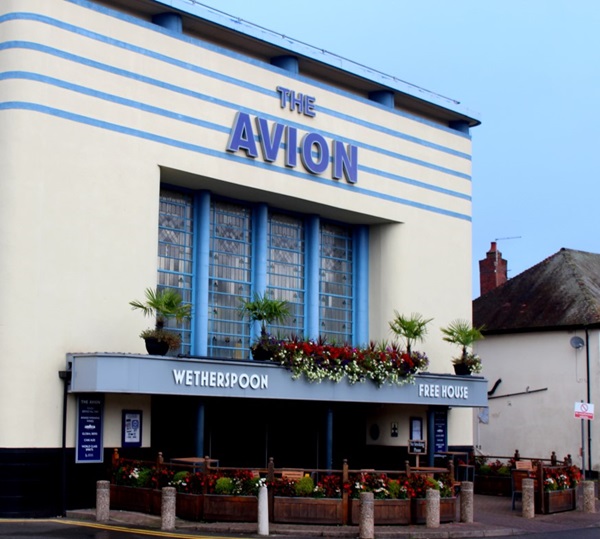
If you have information on the history of this pub, then we’d like you to share it with us. Please e-mail all information to: pubhistories@jdwetherspoon.co.uk